The Holy Liberate or Vilgefortis is a Catholic saint, the patroness of girls seeking to get rid of importunate admirers. According to legend, she was the daughter of the Portuguese
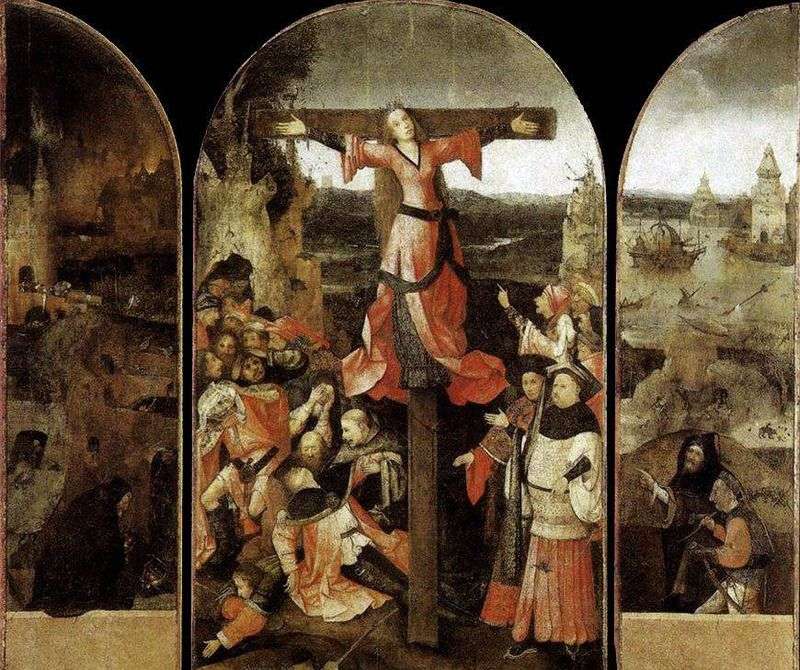
Bosch Hieronymus

The Holy Liberate or Vilgefortis is a Catholic saint, the patroness of girls seeking to get rid of importunate admirers. According to legend, she was the daughter of the Portuguese
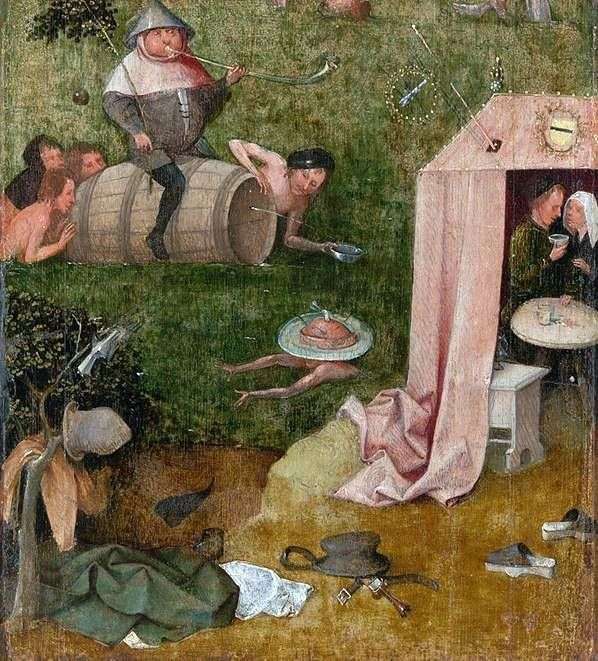
The picture “Allegory of gluttony and lasciviousness” or otherwise “Allegory of gluttony and lust” written in the mature period of the artist’s work is not accidental. Apparently, Bosch considered these

The picture “Death and the miser”, dated by the mature Bosch, dated 1490-1500 years, is, apparently, part of a larger work. This can be judged on the basis of a
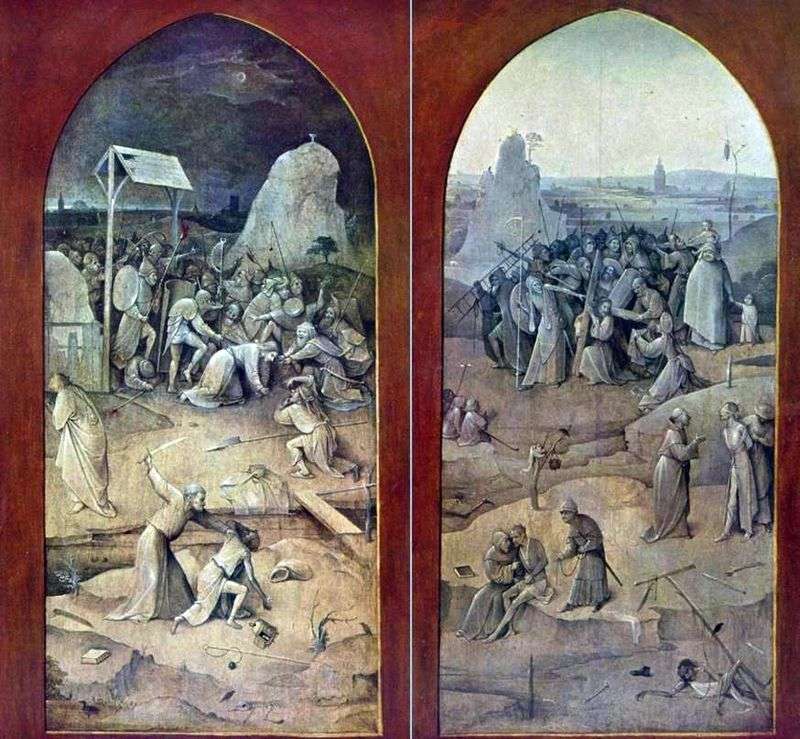
The left outer gate “Jesus’ Capture in the Garden of Gethsemane”. Right outer wing “Carrying the Cross”. The outer doors of the triptych “The Temptation of Saint Anthony” are made
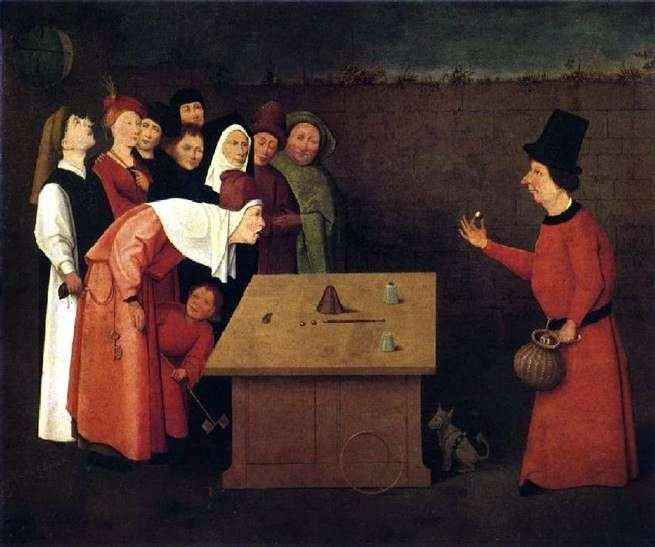
The conjurer is a picture of the Dutch artist Hieronymus Bosch. Regarding the time of writing, there is no common opinion and therefore the date is called the period from

Seven Deadly Sins, one of Bosch’s earliest known works, has a pronounced moralizing character with elements of irony and satire, which has a rather complicated structure: five different diameters of
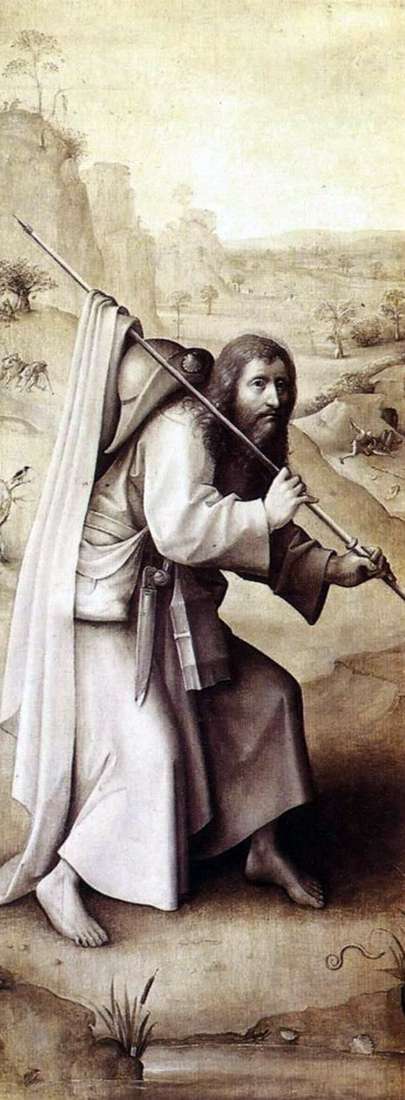
St. James the Elder – the brother of John the Evangelist, was in the circle of people close to Christ. He wears a wide-brimmed pilgrim’s hat and cloak, on his
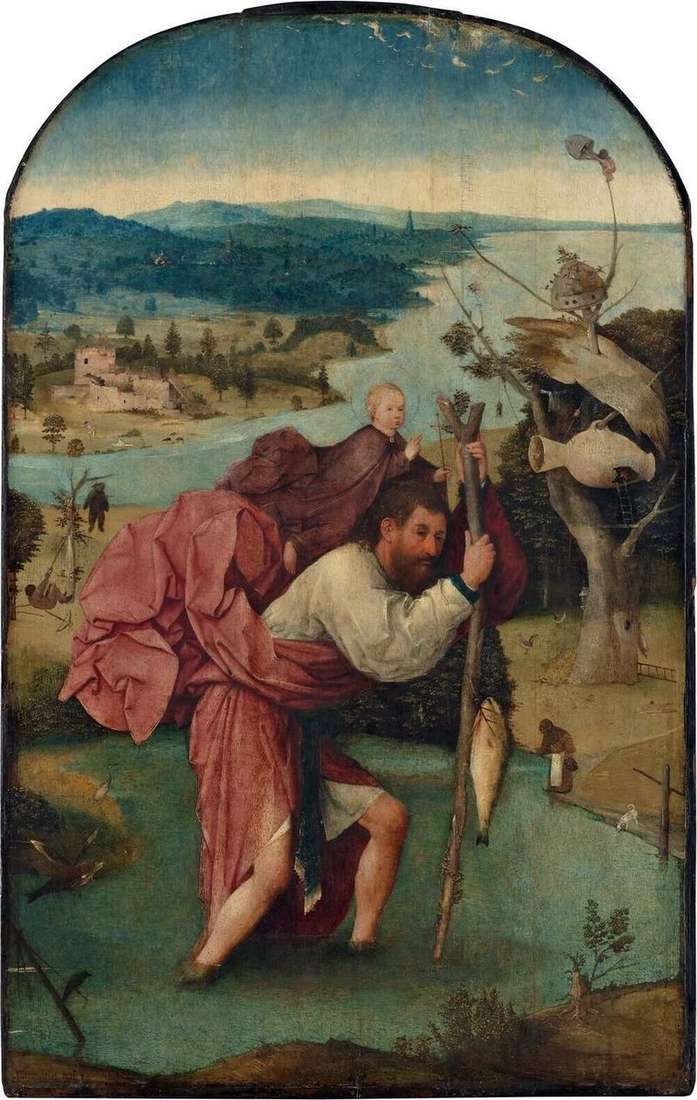
The life of Christopher was known to Bosch on the “Golden Legend” by Jacob Voraginsky, during the life of Bosch translated into Dutch. There it is reported that a giant

Earlier it was thought that the “Concert in the Egg” was a copy of the lost work of Hieronymus Bosch, as indicated by the presence of one of his drawings,
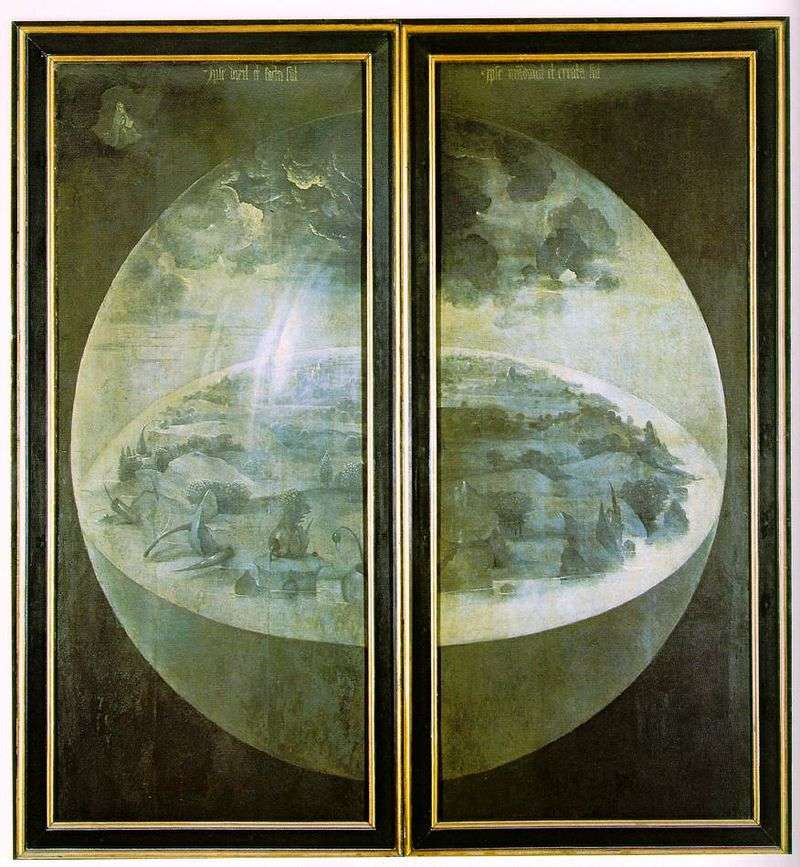
External leaves “Creation of the World” of the altar “Garden of earthly pleasures”. Bosch depicts here the third day of creation: the creation of a land, flat and round, washed
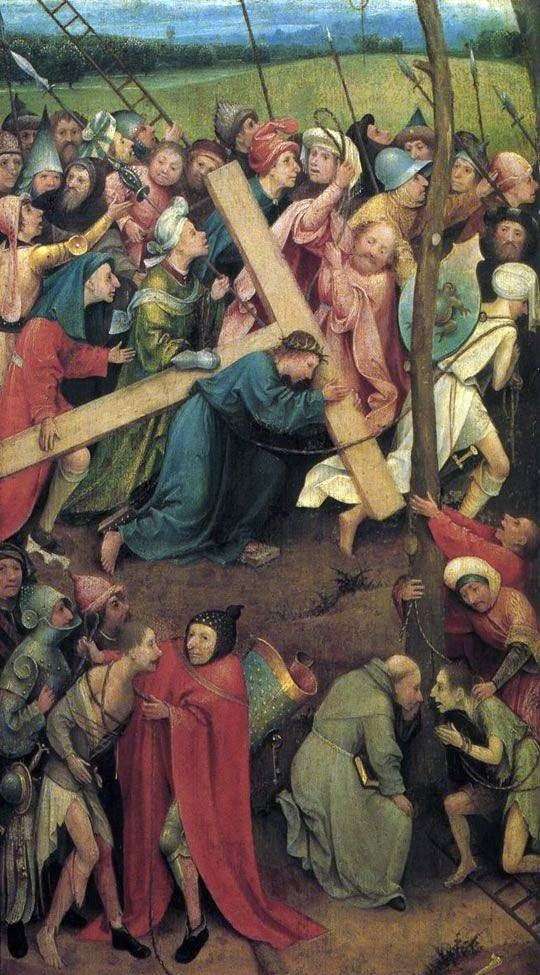
The painting “Carrying the Cross on Golgotha” was the left flank of the non-preserved triptych. This, apparently, is a fragment of a large composition, the central part of which was

This picture is the most famous triptych of the Dutch painter Hieronymus Bosch. Reproduction so called because of its central part, which is devoted to one of the sins –
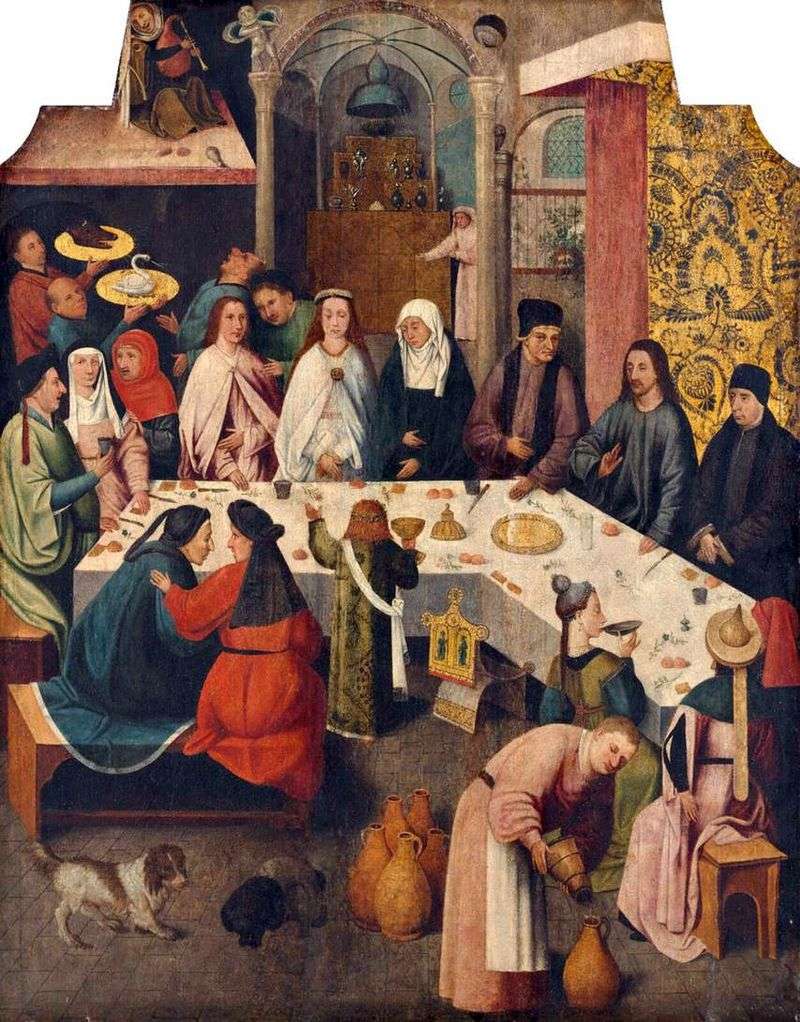
In the painting “Brake in Cana,” Bosch departs from tradition, the scene depicted here is imbued with alarming, diabolical tension. It seems that the mysterious little character in the wreath,

St Bavon was born in Brabant at the end of the sixth century, profitable married, became a rich landowner, had a daughter. He lived a somewhat erratic, dissolute life. But,

Picture “The Crucifixion of Christ.” For Bosch, the image of Christ is the personification of mercy, purity of soul, patience and simplicity. He is opposed by the powerful forces of
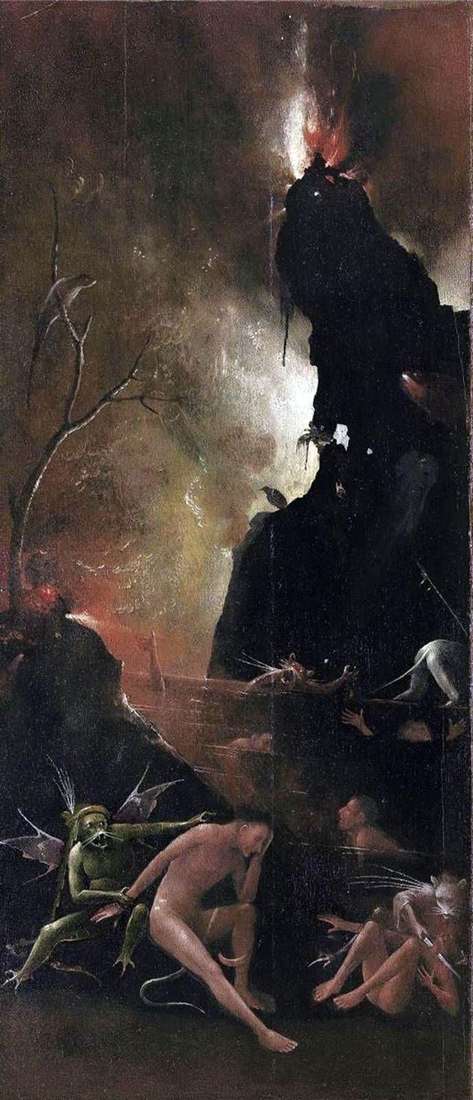
In the picture “Infernal river” from the top of a steep cliff to the sky beats a pillar of fire, and below, in the water helplessly flounder the souls of
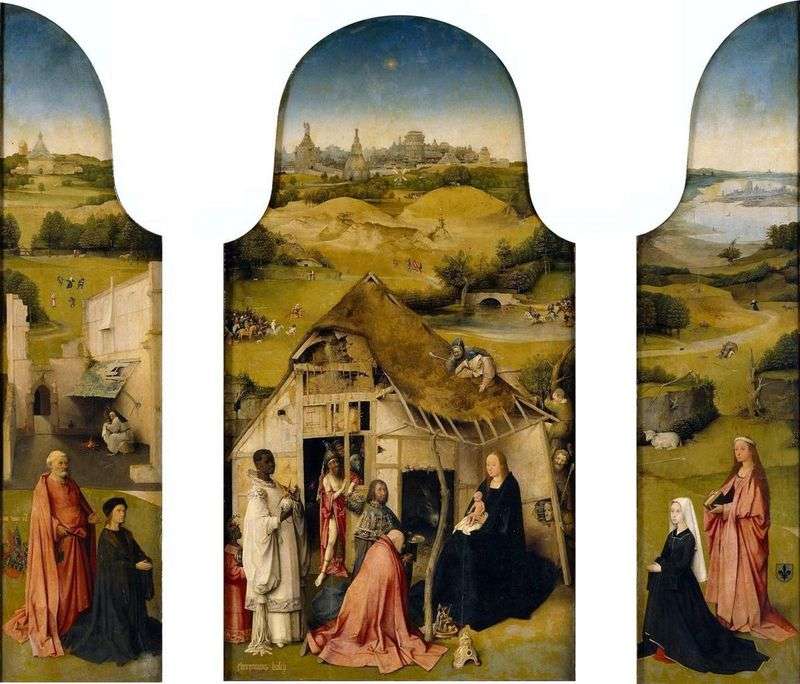
I. Bosch created several triptychs on biblical themes, one of the last is “Adoration of the Magi”. The main part of the work shows the main plot. The Mother of
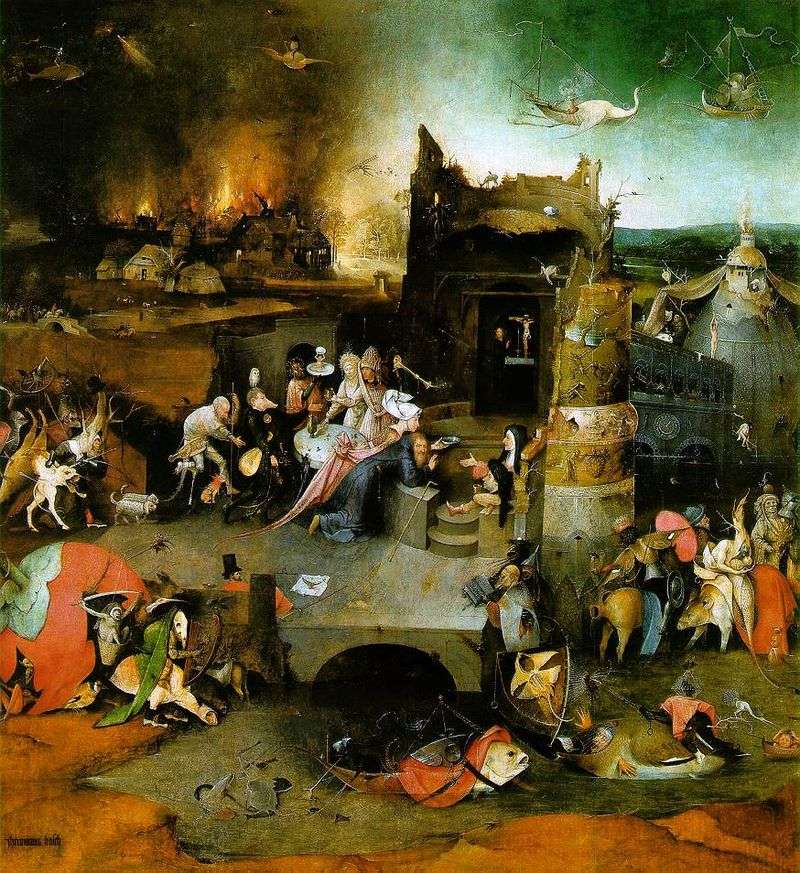
“Altar of St. Anthony” is dedicated to the holy hermit, who lived in the III – IV centuries. in Egypt. Antony was revered as a defender of fires and a
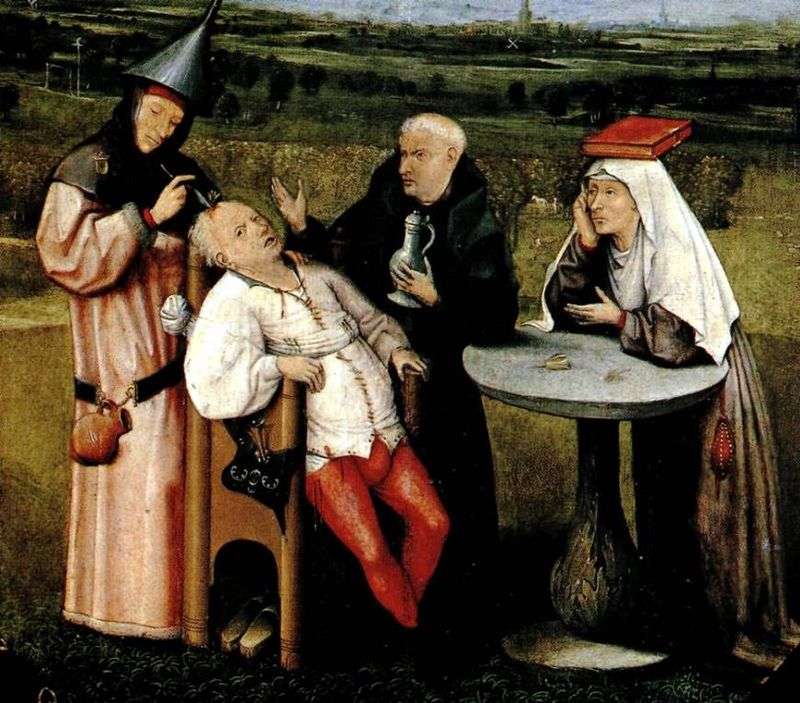
“Extraction of the stone of stupidity” – a picture attributed to the Dutch artist Hieronymus Bosch. This picture represents a folklore line in the artist’s work. At first glance, it
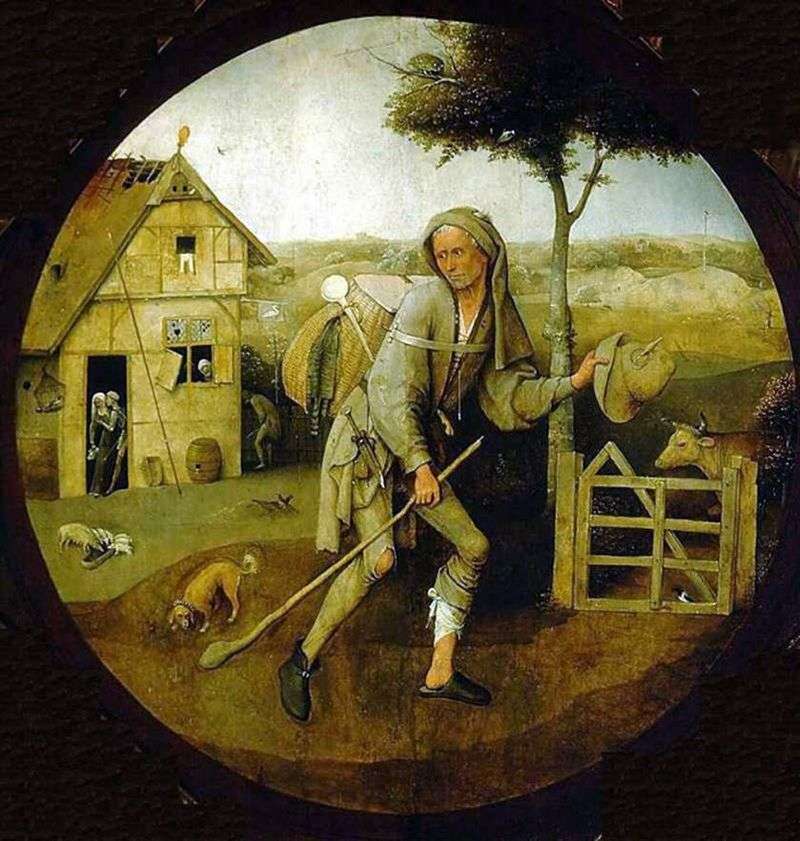
The painting marks the last stage in the artist’s work and is distinguished by a strict and balanced composition, a subtle nuance of the muffled and laconic range of colors.
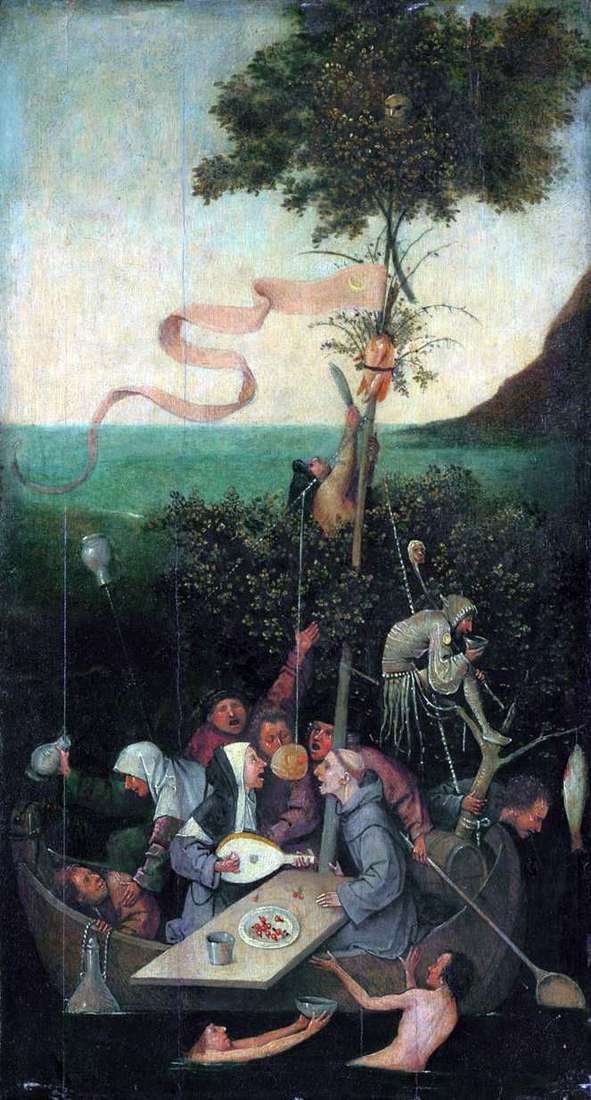
The painting “The Ship of Fools” refers to the mature period of Bosch’s work. The central theme of the “Ship of Fools” goes through all of the artist’s work. This